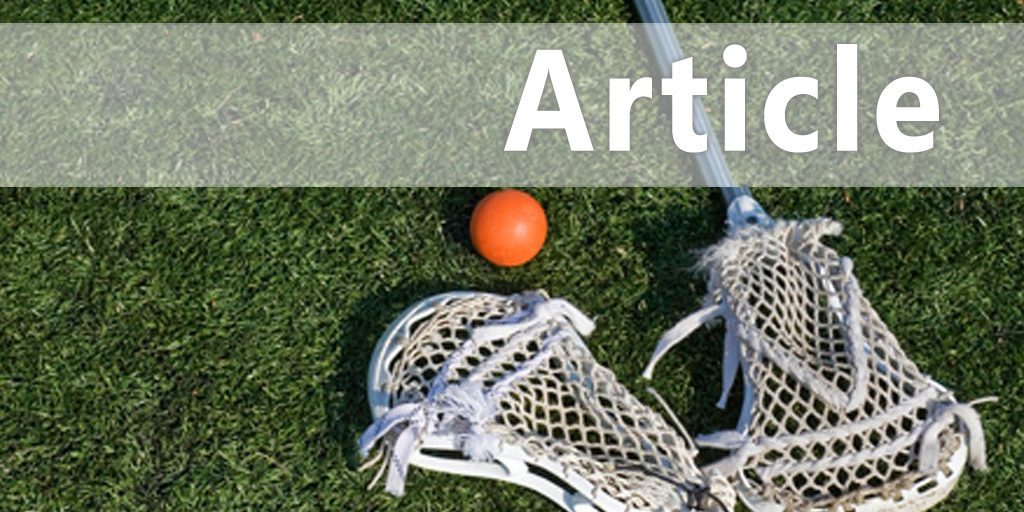| Five Cone Cutting Drill |
| By: Don Zimmerman and Peter England
Originally Published in: Men's Lacrosse - Provided by: Human Kinetics
To learn how to cut to the feeder. SETUP Five cones are arranged in a Y shape out in front of the goal. The player is positioned at cone 1. A coach or teammate is behind the goal (at the apex) with a ball. EXECUTION The player creeps forward and strides toward cone 2. At cone 2, he uses choppy steps to prepare for a change of direction at cone 3. When the player gets to cone 3, the coach with the ball will choose a side and carry the ball in that direction. The player breaks to that side with his stick up for a feed from the coach. The player catches the ball and shoots the ball at the cage. COACHING POINTS • This drill teaches the importance of timing and mirroring the movements of the feeder. • Cutting is dodging without the ball, so these two skills adhere to the same principles. Cut to the Ball You want to cut to the ball, not to the goal. If you cut to the goal, the feed will need to be longer, and you could step into the crease. When you cut, you should run squared up to the ball to take advantage of your speed. Once you get that initial burst and separation, you want to cut hard but also have enough control so you can adjust to the feed. You have to commit to the cut, but you must also be able to adjust your body and stick position to the flight of the ball. When you cut, it can't be at 1,000 mph and out of control. UCLA basketball coach John Wooden would tell his players, "Be quick but don't hurry." The same applies here. You need to be quick for separation, but you shouldn't hurry to complete the play. When you cut, your body and stick need to be under control. Sometimes you have to gear down to complete the play. When the ball leaves the feeder's stick, you have to be poised and ready to make any type of adjustments to the ball with your feet (choppy steps) or your stick. Once you make any needed adjustments, you want to burst to the ball and explode through the feed. You must have a little something "left in the tank" to make the last explosive move to the ball. At this point, you turn your upper body and turn your shoulder 45 degrees, which allows you to knife through the traffic and puts you in a comfortable and relaxed position to catch the ball. You want to be able to look the ball into your stick and "give" with the ball as it enters your stick pocket (See figure 5.3). Once you catch the ball, you can continue to turn your trunk and finish turning your shoulders; you should shift your body weight back and get in a loaded position with your hands and stick back, ready to throw or shoot and protect your stick. Ideally, this motion puts you into an opposite-shoulder position where you're able to make the next play immediately (e.g., quick shot off a cut). After you catch the ball, you should keep moving and continue to run to make sure you stay open. If you're a moving target, then it's more difficult for your defender to keep up with you and more difficult for the goalie to defend your shot. When a player cuts and scores, his momentum will often carry him right up to the feeder-where they both celebrate the goal.
|






